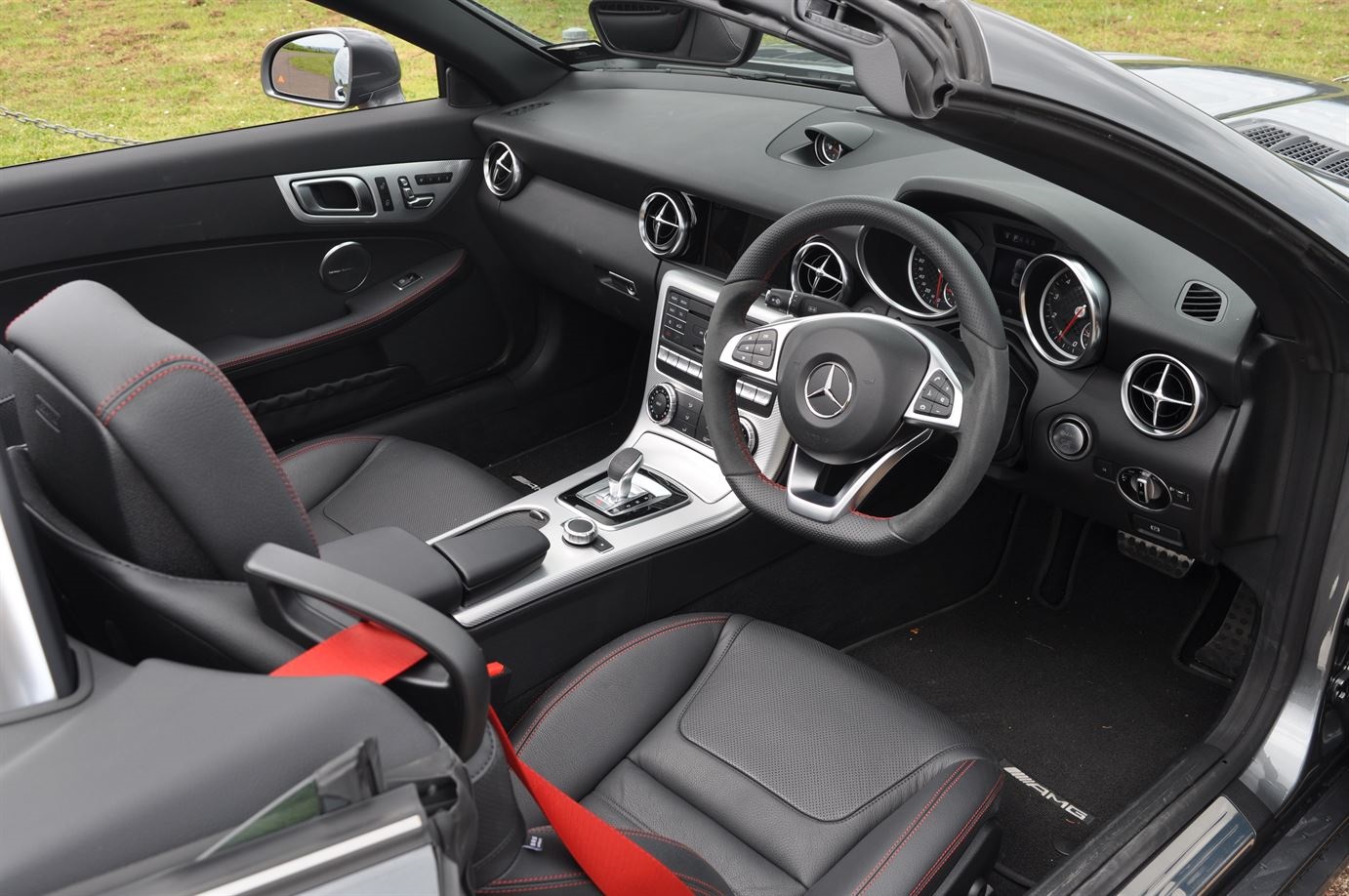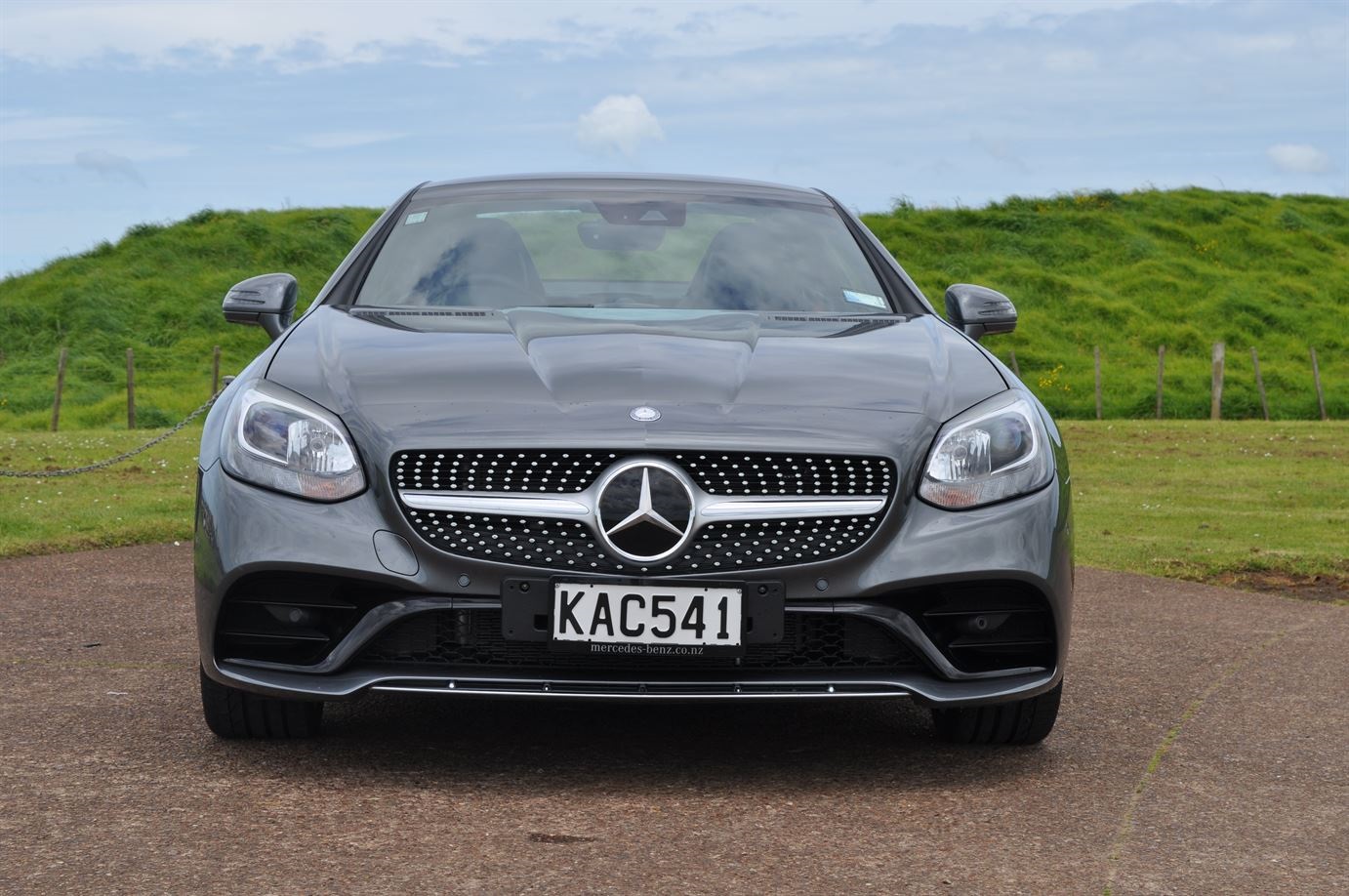Mercedes-Benz SLC 300 2016 new car review
Mercedes-Benz entry-level roadster has a new name. It's grouped with the highly-rated new C-Class.

Mercedes-Benz entry-level roadster has a new name. What was the SLK is now the SLC, following the new overall strategy for vehicle identification from the brand that sees it grouped with the highly-rated new C-Class.
While the new C-Class cabriolet is based on the same platform as the saloon, the SLK is a facelift of the 20122 R172 generation model. It is more subtle than substantial, with a slight sharpening of the old car's looks front and rear, and adopts the ‘diamond’ grille. It's handsome and should get applause for keeping a classic roadster silhouette.
That is despite the SLC’s long-running party trick. The roof or ‘Vario-top’ is a hardtop and it folds down into the boot in around 12-seconds and speeds up to 40 seconds. There are 335 litres of boot space with the roof up, considerably less when an automatic barrier comes down before the roof opens. If there is not enough space for the barrier to fully extend the roof won’t move.
The 300 model reviewed rode on sharp 18-inch alloy wheels and gets AMG line body styling touches.
Touches of C
Inside the basics of the outgoing model remain, with touches of more modern components of the C-Class line like steering wheel and gauges making an appearance. It is executed with class, and feels quality, although the 7-inch media display system probably looks a little out of place.
Party trick number two is in the SLC’s very comfortable sports seats. They are heated, but in addition, the ‘AirScarf’ system blows hot air down the back of your neck to keep you warm. On a cool Auckland night, it is amazing and blocks out the chill.
The ‘Command’ media system is still simple and relatively easy to operate using a centre console-mounted dial. Apple CarPlay has yet to make it to the version in the SLC.
How does it go?
The power plants in the SLC range from a 1.6-litre turbocharged unit to a 3-litre twin-turbo. We were sitting mid-range with a 2-litre unit producing a very healthy 180kW and fat 370Nm of torque.
Teamed with a 9-speed automatic it is an excellent drivetrain, even better with Mercedes sticking to a conventional transmission shifter in their sports cars over the steering column-mounted unit in their other vehicles.
More impressive? A claimed combined fuel consumption figure of just 5.8-litres per 100km.
The SLC is more about being looked at than being an outright driving weapon. This is no Mazda MX-5. It feels planted, and the steering has a lovely amount of weight to it, but it does not feel particularly chuckable or connected as you would expect a sports car at the compact end of the market to feel. It feels a more mature option. Roof down fun, but without having to drive in something you feel will surprise you on a corner.
With a sports exhaust, Dynamic Select system and Dynamic Handling system, the SLC can run as a relatively calm cruiser, or with the flick of the switch tighten up, sound a lot more exotic, and tighten up its responses.
We liked it when switched to Sport mode, but a warning. It makes the accelerator very sensitive, and I found it very hard to get away smoothly without the throttle taking liberties with a small input, jumping the car forward, which would lift my foot off, almost ‘bunny-hopping’ in the process.
The best convertible Mercedes?
Despite the style and sports focus, Mercedes-Benz has added a decent list of safety credentials to the car - six-airbags, a Pre-Safe system, attention assist, active bonnet, active brake assist with autonomous emergency braking and a reversing camera.
We enjoyed the SLC 300, but in bringing it closer to the C-Class range, Mercedes has raised an important question.The new C-Class platform is great and has translated very well into its cabriolet version.
Without the SLC’s old competitor, the BMW Z4, in production anymore, it is not a case of SLC vs. Z4, but SLC vs. C-Class Cabriolet.
Price: $111,500
Image gallery
Also consider





